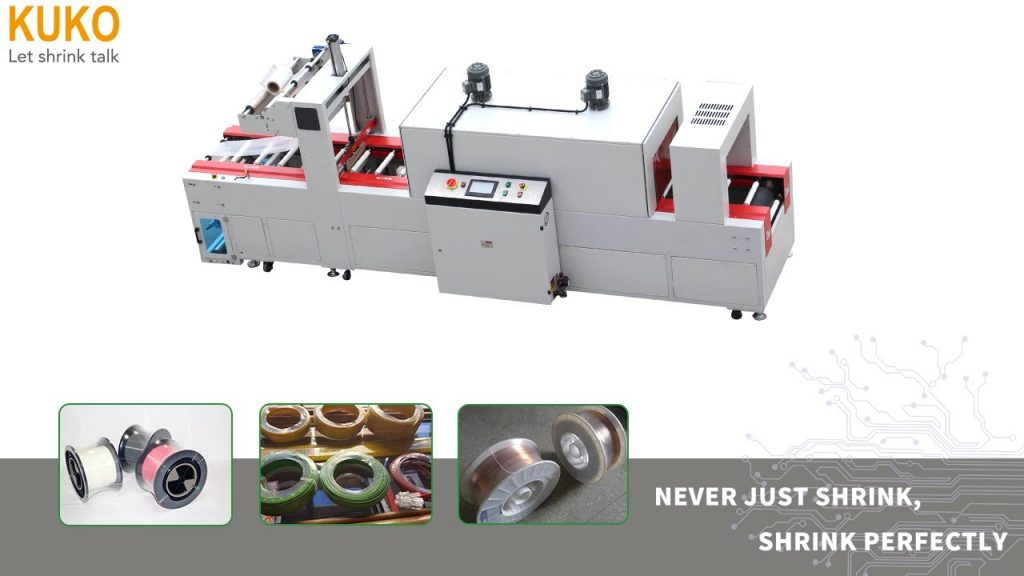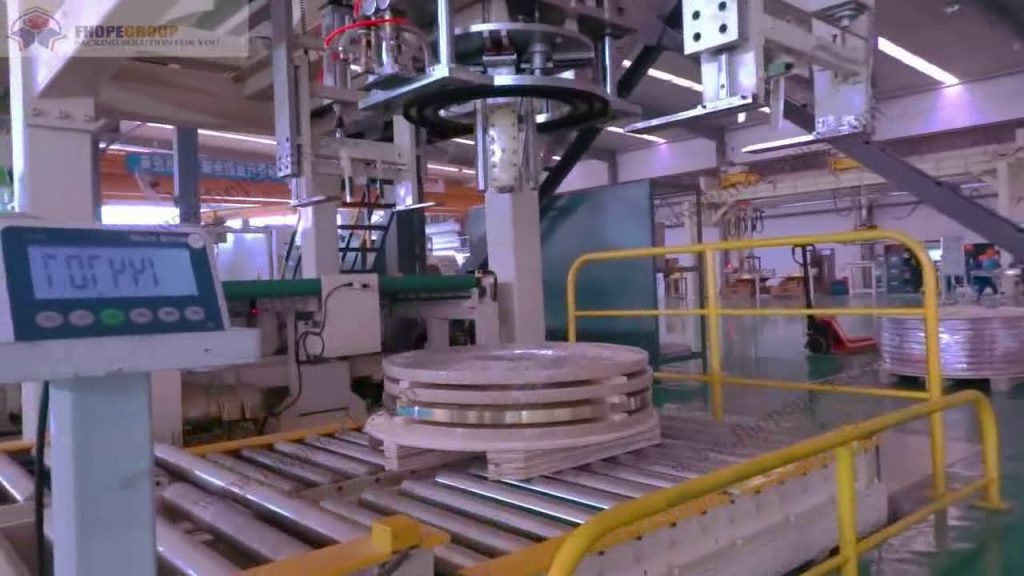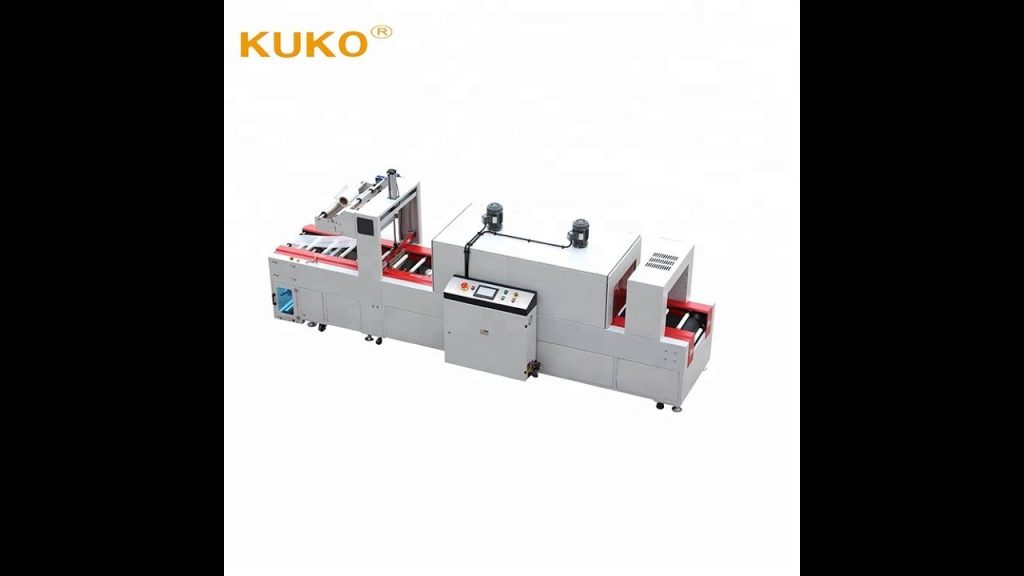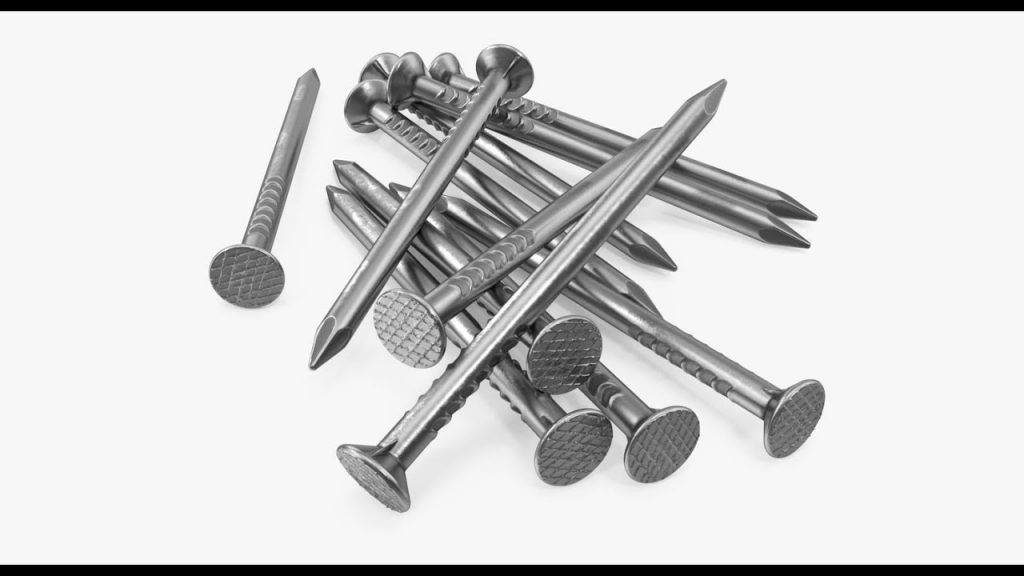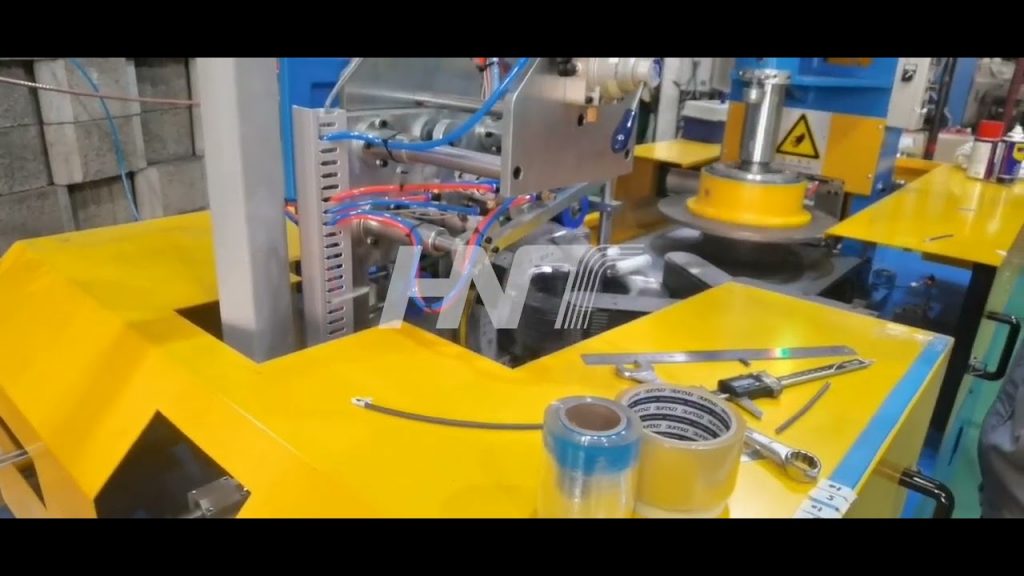Understanding the Mechanics How Mold Upenders Handle Heavy and Irregular Loads
Mold upenders are indispensable in modern manufacturing, automating the rotation of heavy and irregular loads like molds and dies by 90 degrees, enhancing packaging line efficiency, reducing manual labor, and boosting overall productivity. These robust machines ensure consistent and safe handling, minimizing errors and workplace accidents while improving product quality and streamlining operations in diverse industrial settings.
Manual handling of heavy and irregular loads like molds and dies presents significant challenges in manufacturing and packaging industries. The process is not only time-consuming and labor-intensive but also poses considerable safety risks and potential for errors, leading to production delays and increased costs. To overcome these hurdles, mold upenders have emerged as a crucial piece of equipment, revolutionizing how industries manage and manipulate heavy and awkwardly shaped items.
Mold upenders, also known as mold tilters or flippers, are specialized machines engineered to safely and efficiently rotate molds, dies, coils, and other heavy or bulky loads. These devices typically facilitate a 90-degree rotation, transitioning items from a horizontal to a vertical orientation or vice versa. This precise rotation capability is vital in numerous applications, from streamlining packaging lines to aiding in mold repair and maintenance. By automating the rotation process, mold upenders significantly enhance operational efficiency, improve workplace safety, and ensure the consistent handling of valuable industrial components.
What is a Mold Upender?
In essence, a mold upender is a mechanical device designed to eliminate the manual struggle associated with rotating heavy molds. Traditionally, manipulating molds required substantial manpower and often involved cumbersome and risky procedures. Mold upenders automate this process, providing a controlled and efficient method for rotating molds and similar heavy loads.
These machines are not limited to molds alone. They are versatile tools capable of handling a range of items such as dies, coils of steel or aluminum, and other substantial components. The core function remains consistent: to provide a safe and precise method of tilting and repositioning these items, typically through a 90-degree arc. This rotation is crucial for various manufacturing processes, enabling easier access for maintenance, facilitating integration into production lines, or optimizing storage and transportation orientations.
Mold upenders address the critical need for efficient and safe material handling in industrial environments. They minimize the risks associated with manual lifting and turning of heavy objects, which can lead to workplace injuries and damage to valuable equipment. By automating the rotation, these machines ensure consistency, reduce the potential for human error, and contribute to a more streamlined and productive workflow.
Enhancing Packaging Efficiency with Mold Upenders
| The integration of mold upenders into packaging lines represents a significant advancement in operational efficiency. In industries where packaging processes rely on molds, consistent and precise mold handling is paramount to maintaining product quality and production speed. Manual mold rotation can be a bottleneck, slowing down the entire line and introducing variability. Mold upenders directly address these issues by providing automated and consistent mold rotation. The benefits are multifaceted and contribute to a more robust and efficient packaging operation. |
Feature | Benefits |
|---|---|---|
| Automatic Rotation | Eliminates manual handling, reducing labor costs and the risk of human errors. | |
| Precision Handling | Ensures consistent mold positioning, crucial for maintaining product quality. | |
| Seamless Integration | Can be easily incorporated into existing packaging machinery and workflows. | |
| Improved Safety | Automates hazardous tasks, minimizing the risk of workplace accidents. | |
| Adjustable Settings | Offers flexibility to accommodate various mold sizes and types. |
By automating mold rotation, upenders free up personnel from physically demanding and potentially dangerous tasks, allowing them to focus on other critical aspects of the packaging process. The precision engineering of these machines guarantees that molds are consistently positioned, which is essential for maintaining the uniformity and quality of packaged products. Furthermore, their ability to integrate into existing systems means that businesses can upgrade their operations without requiring a complete overhaul of their packaging lines.
The Mechanics Behind Mold Upender Operation
| Understanding how a mold upender operates reveals the ingenious combination of mechanical and electrical components working in concert to achieve smooth and precise rotations. The mechanics are designed to handle substantial weights while ensuring operator safety and operational accuracy. | Component | Function | Benefits |
|---|---|---|---|
| Motor System | Powers the rotation mechanism. | Ensures consistent and controlled rotation speeds. | |
| Control Panel | Allows operators to manage rotation parameters. | Provides user-friendly control and operational flexibility. | |
| Safety Sensors | Detects obstructions and ensures safe operation. | Enhances workplace safety by preventing accidents. | |
| Hydraulic Actuators | Provides the force for rotating heavy molds. | Enables efficient handling of even the heaviest loads. | |
| Feedback Mechanism | Monitors and adjusts the rotation process. | Maintains precision and accuracy throughout the rotation cycle. |
The motor system is the driving force, providing the necessary power to initiate and control the rotation. Operators utilize a control panel to set specific rotation parameters, ensuring that each mold is turned to the exact required angle. Safety sensors are integrated to detect any obstructions in the operational path, immediately halting the machine to prevent accidents and damage. For handling heavy molds, hydraulic actuators are crucial, delivering the substantial force required for turning without stressing the machinery or operators. A sophisticated feedback mechanism constantly monitors the rotation, making real-time adjustments to ensure precision and accuracy.
The integration of these components ensures not only efficient operation but also extends the equipment's lifespan by minimizing wear and tear. This robust design makes mold upenders reliable and indispensable tools in modern manufacturing environments where efficient and safe handling of heavy loads is paramount.
Benefits of Implementing Mold Upenders
| The advantages of adopting mold upenders extend far beyond simple automation. They provide a comprehensive range of benefits that positively impact various aspects of manufacturing operations. Investing in a mold upender translates to increased efficiency, reduced costs, improved product quality, and enhanced workplace safety. | Benefit | Description | Impact on Manufacturing |
|---|---|---|---|
| Enhanced Efficiency | Automates the rotation process, saving significant time. | Increases overall production speed and throughput. | |
| Cost Reduction | Minimizes manual labor, lowering labor expenses and error costs. | Improves profitability by reducing operational overheads. | |
| Improved Quality | Ensures precise and consistent mold rotation, reducing defects. | Enhances product consistency and overall quality standards. | |
| Increased Safety | Reduces manual handling of heavy molds, minimizing injury risks. | Lowers the risk of workplace accidents, creating a safer environment. | |
| Scalability | Adaptable to varying production volumes and operational scales. | Supports business growth and changing production demands. | |
| Maintenance Ease | Advanced monitoring systems simplify upkeep, reducing downtime. | Decreases downtime and lowers long-term maintenance costs. | |
| Energy Efficiency | Optimizes power usage during operation. | Reduces operational costs through lower energy consumption. |
Efficiency gains are immediately apparent as mold upenders automate a process that is typically time-intensive when performed manually. This enhanced efficiency translates directly into increased production speed and the ability to process more units in a given timeframe. Cost reduction is achieved through decreased labor requirements and the minimization of errors that are common in manual handling. The precision rotation offered by upenders leads to improved product quality by ensuring consistent mold handling and reducing defect rates. Safety is significantly enhanced as the machines take over hazardous manual handling tasks, thereby lowering the risk of workplace injuries.
Moreover, mold upenders are scalable, capable of accommodating different production volumes, making them a versatile investment for businesses of all sizes. Advanced monitoring systems contribute to ease of maintenance, allowing for timely interventions and reducing unexpected breakdowns. Finally, energy-efficient designs help to minimize operational costs by optimizing power usage. Collectively, these benefits make mold upenders a transformative technology for industries relying on molds and heavy load manipulation.
Handling Heavy and Irregular Loads with Confidence
Mold upenders are specifically engineered to handle heavy and irregular loads, a capability that sets them apart from standard material handling equipment. The robust design and powerful mechanics of these machines are tailored to manage items like molds, dies, and coils, which are not only heavy but often awkwardly shaped and unbalanced.
The key to handling such loads lies in the structural integrity and power of the upender. Heavy-duty construction, combined with hydraulic or electric drive systems, ensures that the machine can lift and rotate substantial weights without instability or risk of failure. Features like robust braking systems are critical for maintaining control and ensuring safety during the rotation process, especially when dealing with off-center or irregularly distributed loads.
For items like coils, specialized tables including V-shaped tables can be incorporated into the upender design to securely cradle the round shape and prevent slippage during rotation. For molds and dies, flat worktables often suffice, providing a stable platform for these generally more rectangular or square shaped items. The ability to customize the table design further enhances the upender's versatility in handling various types of irregular loads.
The load capacity of a mold upender is a primary consideration in its design and manufacturing. Engineers must carefully calculate and build the machine to withstand the maximum intended weight, ensuring that all components, from the frame to the actuators, are sufficiently robust. This focus on structural strength and load management is what allows mold upenders to confidently and safely handle the heavy and irregular loads that are common in many industrial settings, enabling efficient and safe operations that would be impractical or hazardous to perform manually.
Choosing the Right Mold Upender
Selecting the appropriate mold upender is crucial for maximizing its benefits and ensuring seamless integration into your operations. The 'right' upender depends heavily on the specific needs of your application, particularly the types of loads you handle and the demands of your workflow.
Key considerations when choosing a mold upender include:
- Load Capacity: The maximum weight the upender is designed to handle is paramount. Ensure the chosen model exceeds the weight of your heaviest molds or loads to provide a safety margin and ensure long-term reliability.
- Table Type: Consider the shape of your typical loads. Flat tables are versatile for molds and dies, while V-shaped tables are better suited for coils. Fork-type tables offer options for handling items loaded via coil wagons or cranes, providing greater flexibility in material handling integration.
- Rotation Angle: While 90-degree rotation is standard, some applications might benefit from upenders with 180-degree rotation tables or even 360-degree base rotation capabilities for enhanced maneuverability and workflow optimization.
- Drive System: Electric and hydraulic drive systems both offer robust performance. Hydraulic systems are generally favored for very heavy loads, while electric systems can be more energy-efficient and cleaner for certain applications.
- Control System: Look for user-friendly control panels that offer precise control over rotation speed and angle. Automated control options can further enhance efficiency and reduce operator fatigue.
- Safety Features: Essential safety features include emergency stop systems, safety sensors, and load securing mechanisms. Prioritize models with comprehensive safety features to protect operators and prevent accidents.
By carefully evaluating these factors in relation to your specific operational requirements, you can select a mold upender that will deliver optimal performance, enhance safety, and provide a significant return on investment.Conclusion
Mold upenders are more than just machines; they are integral components in modern, efficient, and safe manufacturing and packaging environments. Their ability to automate the handling of heavy and irregular loads like molds, dies, and coils directly addresses critical challenges related to productivity, safety, and product quality. By understanding the mechanics, benefits, and selection criteria of mold upenders, industries can make informed decisions to integrate these powerful tools into their operations, ensuring streamlined workflows, reduced costs, and enhanced overall performance in today's demanding industrial landscape.
